[ad_1]
Ankles are often an overlooked part of the puzzle when it comes to training, but they’re one of the most common injury areas for athletes. The classic injury is a sprained ankle. That’s when the ligaments that connect one bone to another (in this case, the ones connecting the tibia and fibula to the calcaneus and talus bones) get torn. Depending on severity, these injuries can take quite a while to recover from, and they usually decrease stability at the joint even after the injury is healed. Foot and ankle strengthening exercises can help you prevent these injuries before they happen.
By strengthening the joint with ankle exercises, you can develop bulletproof ankles that not only have ideal stability, but also improved mobility, too. Healthy ankles also have benefits beyond your feet. Ankles have a big effect on your standing posture and walking gait, for example, and weak ankles can create unbalanced stress forces on your knees, hips, and even lumbar spine. Keeping your ankles healthy also helps these other areas of your body.
Related: The Best Workout Routine Ever, According to Science
Anatomy of the Ankle Joint
Anatomically speaking, the ankle refers to the area where the foot meets the lower shin. The protrusions we all refer to as the ankles on each foot (those knobby bumps on either side of our heels) are called the lateral and medial malleolus—a fancy anatomy term to define the bottom ends of our shin bones, the tibia and fibula.
The muscles and connective tissue that surround this joint are integral to the stability of the ankle, and if you want healthy joints, it’s essential to keep them strong.
The Soleus Muscle: The soleus is located deep inside the calf, close to the bottom half of the lower legs. It acts as a huge stabilizer to the lower leg (since it’s a deeper muscle that’s basically always working). It’s a crucial, and often ignored, element of lower leg development.
The Tibialis Anterior Muscle: When talking about ankle mobility and strength, people often think about ways to make the foot plantar flex (pointing the toes down and away from the leg), but rarely do they think about the ability to dorsiflex (bringing the toes upward, closer to the shin). The tibialis anterior is located on the front side of the shin, and it’s responsible for pulling the toes up. It’s important to strengthen this movement to promote full range of motion at the ankle joint, and it’s also crucial for the health of other joints, especially the knees. Often when someone has knee problems and a history of knee pain, they’re lacking knee-over-toe mobility and strength caused by poor dorsiflexion at the ankle.
The Plantar Fascia: Although not a muscle, the plantar fascia are just as important for ankle joint strength and health as the muscles above. The fascia is largely responsible for the resting position of the foot, which can be a key indicator of what parts of the body receive added stress or are more susceptible to injury. The ankle is one of the first joints to be subject to the consequences of a misaligned foot resting position.
The Gastrocnemius Muscle: General calf strength will be useful in getting stronger ankles, since both heads of the gastrocnemius (a.k.a. the calf muscle) share a common tendon: the Achilles. Their strength and tissue quality will influence overall ankle strength and stability.
Related: The Best Muscle-Building Exercises for Every Muscle Group
The Top 5 Ankle Strengthening Exercises
It’s important to address ankle mobility, stability, and strength when exercising the joint. Each of the ankle strengthening exercises below brings something unique to the table to aid in creating healthy ankles, and together they work all sides of the joint.
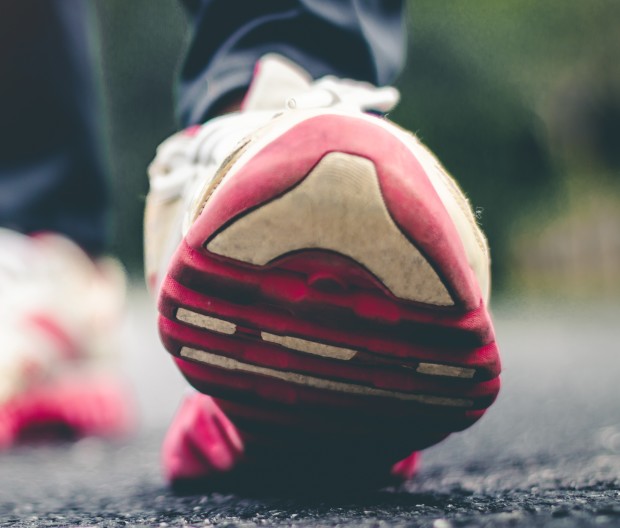
Nattapong Wongloungud / EyeEm / Getty Images
This movement will create a good burn to start your lower body workout. It helps improve mobility at the ankle through strengthening the tibialis anterior, the prime muscle involved in dorsiflexion.
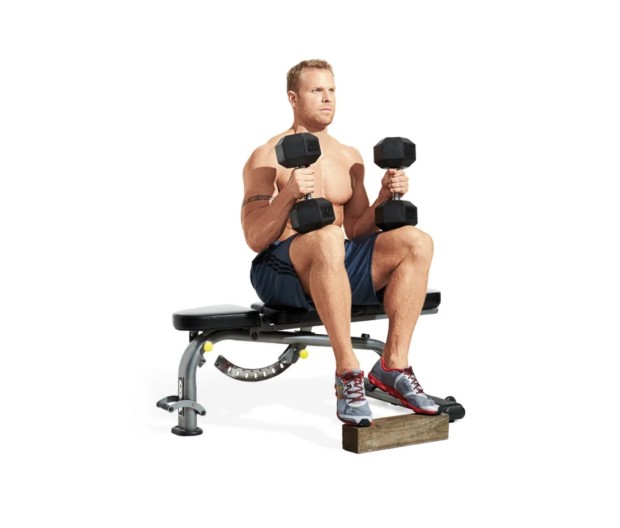
The seated calf raise machine differs from doing standing calf raises due to the fact that the knee is already in flexion to begin; this takes the gastrocnemius muscles out of the picture to keep the focus on the soleus. These muscles are geared toward long endurance work (they’re always working to help us walk and stay standing). For that reason, the soleus muscles respond well to high-rep sets. The ankles will also benefit, as stronger soleus muscles make the joint more durable and stable.
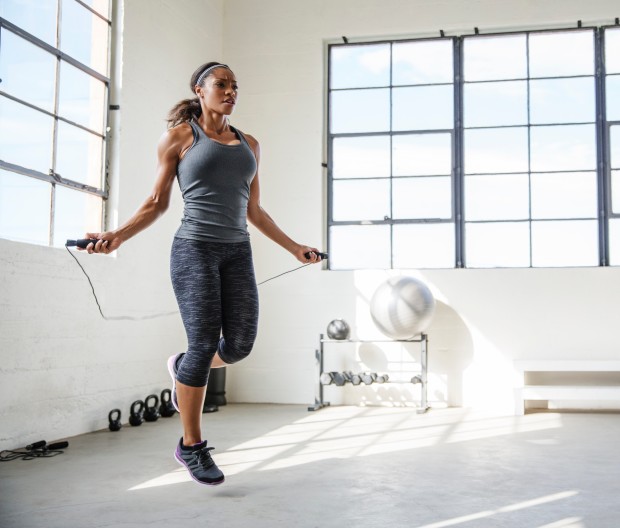
Cavan Images / Getty Images
The problem most people run into when it comes to making the ankles more durable? Doing too much too soon. Jumping rope allows you to strengthen the ankles with lower-level impact forces.
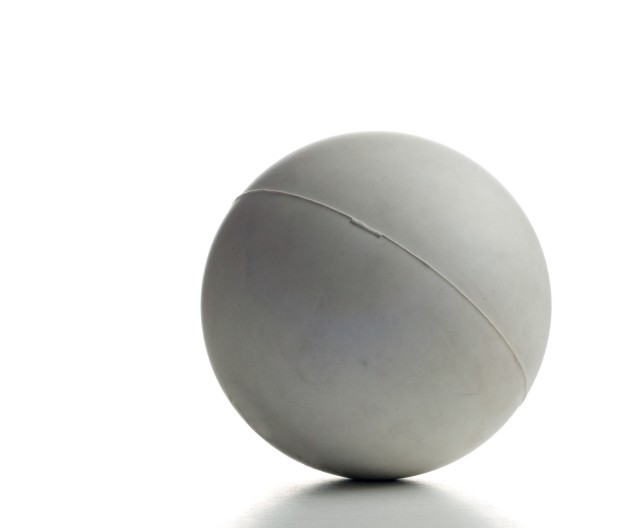
Ben Haslam / Getty Images
Addressing the tissue quality of the bottom of the foot can work wonders for improving ankle mobility and reducing chronic pain in and around the feet. This move focuses on the plantar fascia at the bottom of the foot.
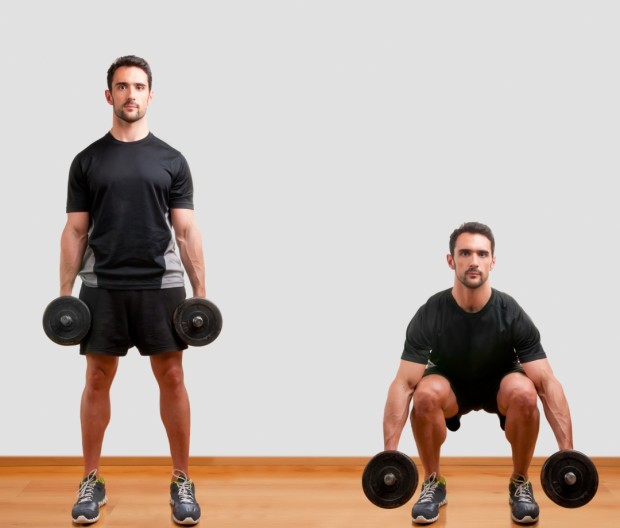
The heels-elevated dumbbell squat isn’t a fix for ankle immobility in itself, but it’s a great way to access ankle range of motion while the knee is fully flexed, and that’s significant. Most people who have ankle immobility never get the chance to experience a full, deep squat due to the demands it would place on their center of gravity. As a result, they can’t bear load through deep ankle dorsiflexion or knee flexion ranges. Elevating the heels places the ankles in a position of flexion to start the lift, while the body is standing tall, allowing the ankles to have more room to dorsiflex as the butt travels downward. In short, everyone will get a deeper squat by placing their feet on a slant board. Using a narrow stance will amplify the benefits to ankle mobility also. Plus, the quads will get hit hard.
[ad_2]
Source link

Hi! I’m a dedicated health blogger sharing valuable insights, natural remedies, and the latest scientific breakthroughs to help readers lead healthier lives. With a holistic approach to wellness, I empower individuals with accessible and actionable content, debunking myths and offering practical tips for incorporating healthy habits.